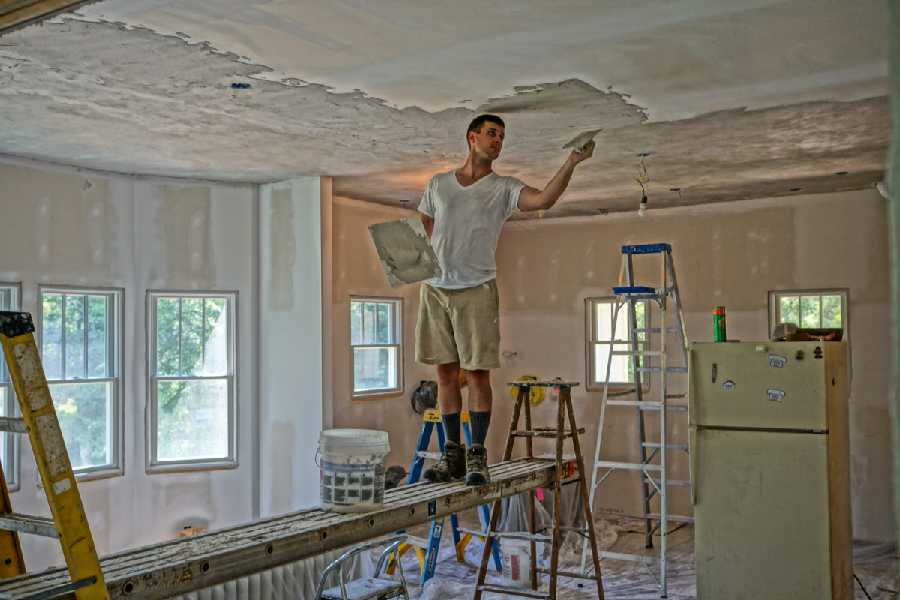So you’re renovating a house – Where to start? The rewiring and plumbing’s always the best place to start as problems with these can wreck decoration and flooring.
Rewiring and Plumbing
When it comes to plumbing installations, the main concern is fitting the supply and waste pipes, but it’s crucial to realise that a lot of modern plumbing equipment also necessitates wiring. A huge project will almost certainly require electrical work, and it’s usually best if the two components work together.
The previous system will normally be entirely removed and replaced with new runs beneath the floorboards and within the walls when the piping is being replaced.
You and the plumber should consider where the pipes will run and whether they will damage important features or structural elements such as plasterwork, rafters, or details in adjacent rooms.
Because plumbing and wiring must be maintained and replaced on a regular basis, you should look to make new services easy to reach and remove. When working with pipes that run beneath wood floors, use caution when raising the boards.
To avoid condensation issues, kitchens and bathrooms must be ventilated. Mechanical extract fans with a high volume of air to expel moist air will need to be installed. If at all feasible, avoid cutting new holes in heritage walling to accommodate the vents – and make sure the outlet doesn’t detract from the house’s exterior aspect. Poorly maintained installations can lead to continuous leaks, causing considerable damp, rot, and damage to the building’s structure as well as the aesthetic finishes.
Knowing the location of your mains water shut off valve, also known as a stopcock, might save you hundreds of dollars. Turning off the valve will limit the water supply to your house and minimise the damage to your property in the case of a burst pipe or a significant leak.
If you’re a landlord, you’re responsible for keeping your property’s functional components such as electricity, plumbing, and heating in good working order. Before each of your renters signs a lease with you, make sure that all these items are in functioning order; everyone has the right to a safe and comfortable living environment.
As a landlord, you’re usually in charge of:
- Assuring that blocked sewers and waste pipes are cleaned if they are not caused by the tenants’ negligence.
- Boilers and hot water cylinders require regular maintenance.
- Pipework, radiators, fittings, and valves are all included.
Plumbing health and safety tips
- Lead, asbestos, solvents, mould, raw sewage, and other materials are among the materials to which you may be exposed. Exposure to these materials can cause a variety of health problems, including Tetanus and Hepatitis A, B, and C.
- Only engineers on the Gas Safe Register are permitted to install and service gas boilers and other equipment, and carbon monoxide alarms must always be installed.
- Because lead water pipes are frequent in older houses, it’s a good idea to have your drinking water tested for lead.
- Stop any hot work at least an hour before leaving the site to avoid fire hazards, and make sure the area is thoroughly checked before locking up.
- To reduce your exposure to materials, make sure you’re wearing the right PPE. Gloves, coveralls, rubber boots, and eye protection should all be included in your PPE.
- Whenever you take a break, wash your hands, and disinfect your equipment.
- Always install and keep good ventilation in place.
Plan out insulation, drywall, and flooring
Planning out insulation, drywall and flooring mainly done after rewiring and plumbing. The insulation must be installed before the drywall can be installed. Examine the numerous types of insulation available and plan to use different types in different parts of the house. It’ll come in handy in the walls and attic. You’ll finish the walls with drywall, which you’ll hang, mix, and sand. Drywallers hang drywall sheets, apply drywall compound, then wait for it to dry. They sand it smooth when it has dried. They may repeat the process until they obtain a completely smooth surface. You might be able to achieve this on your own with enough effort and patience. You could even do it by yourself.
Your eventual floor covering will depend on the room; for example, for various living and bedroom areas, you might choose laminate, solid hardwood, engineered wood, or carpet; for bathrooms and kitchens, you might choose vinyl, tile, or marble. Plan to install the flooring as late as feasible in the renovation process, regardless of what you choose. This will prevent substantial harm to your flooring surface.
If you enjoyed this article on ‘Renovating a house – Where to start’ you might also like to read about Does my house need a Rewire?



One thought on “Renovating a house – Where to start”